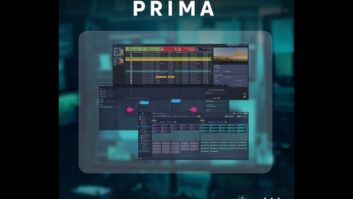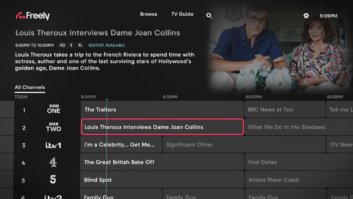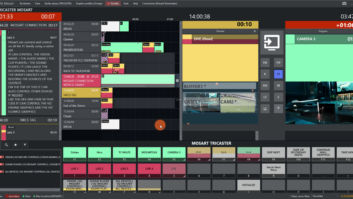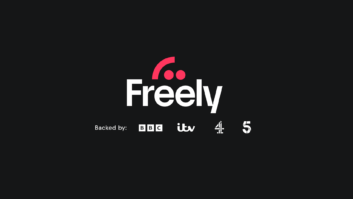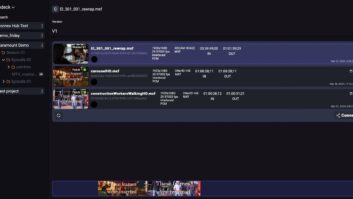
By Harold Vermeulen, founder and MD, PubliTronic.
The term ‘channel in a box’ just doesn’t do justice to the automation, functionality and integration modern systems incorporate in order to help broadcasters tackle their complex playout challenges. The channel in a box industry should really be split into two very different streams – the more traditional single box solution and the superior, integrated playout approach.
Traditional: Original channel in a box suppliers have typically been driven by the cost efficiency of their systems. They focussed on delivering conventional playout, with simple, straightforward functionality, as cheaply as possible. This allowed customers to make big savings on CAPEX, but the level of functionality in these systems, particularly the earlier generations, was always kept to the bare minimum required in order to keep the price down.
Traditional stand-alone channel in a box systems are capable of working well in the more simple deployments, with more basic workflows, but their lack of functionality has meant they’ve often been found wanting when deployed in larger multi-channel operations and/or highly branded channels. The complex and dynamic playout of highly branded channels will consistently see 5-10 elements coming together for every event, including content, multi language audio, promotions, subtitles, secondary events, etc. All the various multi stream content, graphics, editing, audio elements must also be ready at the right time and in the right order. Historically, this has been a big failure and criticism of channel in a box solutions and the biggest cause of user dissatisfaction.
Given that these types of channels are often the most dynamic, the most keen to embrace innovation as a means to differentiate themselves and the ones most likely to entertain moving from conventional playout models, this failure has proven an unfortunate stumbling block for many suppliers. To compete with high-end conventional playout solutions channel in a box has to become cleverer and more powerful to deliver the required performance… and this is where the integrated playout approach has shone.
Integrated playout: Integrated playout offers broadcasters, especially thematic and multi channel ones, a far better way of making their brand of television, as it represents a more reliable, scalable and conceptually superior infrastructure for delivering broadcast workflow.
The integrated playout approach is capability driven i.e. its goal is to integrate asset management, automation, playout, branding and associated broadcast functionality into one or more IT based systems in a way that is far easier and efficient for broadcasters to use, compared to a conventional playout approach. Cost efficiency is a knock on result rather than the goal from the outset. By abandoning the conventional approach of making television in two or more disparate steps, integrated playout holds the key to radically simplifying and improving content preparation and playout workflow in both SD and HD channels.
Almost everyone recognises that conventional workflow processes, whereby complex programming is assembled close to playout, are fatally flawed and create unnecessary complexity and pressure for the time critical resolution of problems by the source. By decreasing the use of disparate technology systems and streamlining workflows broadcasters can move their whole playout process forward by days and run a much leaner playout operation. Integrated playout also helps to greatly reduce cycle times for programme changes, avoiding repetition and allowing broadcasters to get their content to air more smoothly than conventional models.
Over time, as the industry has become more established, customers are looking more at the cost efficiency of integrated playout, but even today most of the large scale projects out for tender end up basing decisions on capability not cost i.e. the solution that can give them the simplest workflow and be deployed the quickest.
Software is king
Key to integrated playout is the software environment. Where in the past companies would have no choice but to buy a dedicated broadcast platform, nowadays standard IT technology is perfectly capable of delivering the necessary performance. The IT hardware element of the playout platform is fast becoming degraded and is now merely the enabler.
Development of software and algorithms is now where suppliers’ real IP lies and what the customer pays for. Because of this, the cost of adding extra processing power and memory to a system, to meet a higher performance requirement, becomes largely insignificant in terms of the overall cost of the system.
Integrated playout’s software-based architecture also means that it is easy to manage a mixed playout of various standard and proprietary files, formats and conversions. All that is required is a little development work, as many existing installations in the field prove.
The fact that integrated playout’s main IP is all in software also helps facilitate a ‘pay for what you need’ model. Using the same standard IT hardware blocks, customers can specify the required software functionality they desire and not have to pay for features they never use.
One thing is for sure — it’s only a matter of time before conventional playout becomes extinct. However, traditional channel in a box systems do not yet have what it takes to become the de facto replacement. Bigger channels will always have larger, more complex requirements that call for a distributed software-based environment that is a long way from what current channel in a box systems can deliver.
‘Channel in a box’ implies that one box is only capable of playing out one channel. If you have five channels to playout, then you need five boxes. This is not a solution! Instead, the integrated approach allows you to cluster various elements of the functionality, playout and workflow in a far more logical and efficient way.
To me integrated playout and software-based solutions are unquestionably the future of broadcasting. I have absolutely no doubt that they will eventually replace conventional playout entirely, but through distributed IT platforms rather than a single box solution.
